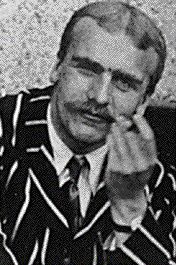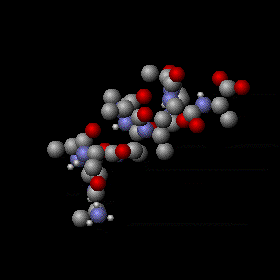
February 1 opens, for many cultures, that time when, from cold and snow, ice and chill, dark and still, springs life.

Charles Darwin wrote, on 1 February 1871:
“It is often said that all the conditions for the first production of a living organism are now present, which could ever have been present. But if (and oh what a big if) we could conceive in some warm little pond with all sorts of ammonia and phosphoric salts – light, heat, electricity &c. present, that a protein compound was chemically formed, ready to undergo still more complex changes, at the present day such matter wd be instantly devoured, or absorbed, which would not have been the case before living creatures formed.”
- Letter of Charles Darwin to Joseph D. Hooker, 1 February 1871.
It was an idea whose time had come: spring – and the springing of life – was in the air. In the 1920’s, two scientists – not yet knowing the other’s work because they published in different languages not immediately translated – came up with a theory of the origin of life energy.

Alexander Ivanovich Oparin heard from scientific colleagues that methane had been detected in the atmosphere of Jupiter. That set Oparin to musing: did ancient Earth have an atmosphere that also contained methane, probably along with hydrogen maybe in the form of water vapor, and also ammonia. If so, these components could have formed what we think of as life. Oparin’s hypothesis was published in 1924 in Russian, in a little pamphlet “Proiskhozhdenie Zhizny” or “The Origin of Life” but not translated into English until 1936 or some say 1939, in either case years after Haldane had the same idea.

Meanwhile, John Burdon Sanderson Haldane (usually referred to as J.B. S. and who called himself Jack as a nickname) came up with the same, or very similar, idea. Haldane’s article of eight pages entitled “The Origin of Life” appeared in 1929 in The Rationalist Annual. Haldane suggested that the ancient atmosphere of Earth contained ammonia, water, and carbon dioxide, and would have been bombarded with ultraviolet rays from the sun that would alternate, day and night, inducing reactions through the constant alternation. When Haldane learned of Oparin’s hypothesis, he graciously commented that of course Oparin came first.
While very similar – hypothesizing a number of chemicals that would be impacted a repeating mechanism – Oparin and Haldane had slight differences in both of those parts: chemicals and mechanism. Their chemicals were referred to as “The Primordial Soup.”

Chemicals – the primordial soup. Oparin’s chemicals were ammonia, methane, hydrogen, and water vapor. Haldane’s chemicals were ammonia, carbon dioxide, and water vapor. Therefore, each had a carbon source: methane (Oparin) and carbon dioxide (Haldane). These chemicals formed a “primordial soup.” But what stirred the soup to life?

Mechanism -But something had to stir the primordial soup. Oparin hypothesized lightning. Haldane hypothesized ultraviolet light.
Result?

When the mechanism stirred the soup, over and over again, molecules bumped into each other and eventually that friction formed them into combinations or building blocks – like amino acids. From there, complexity continued to increase. In scientific circles, the theory became known as “Oparin-Haldane” hypothesis, so despite Haldane’s graciousness, they both went into history as simultaneous discoverers and formulators of an intriguing hypothesis.
Still, it remained just a hypothesis – intriguing but yet unproven. In the next episode, we’ll see if Oparin, Haldane, and Darwin were right about the Big IF.
Darling, David. “Oparin-Haldane Theory: Chart on Differences in Theories of Oparin and Haldane” https://www.daviddarling.info/encyclopedia/O/OparinHaldane.html
Forsythe, Jay G., et al., “Ester-Mediated Amide Bond Formation Driven by Wet-Dry Cycles: A Possible Path to Polypeptides on the Prebiotic Earth.” 15 July 2015. Angewandte Chemie, Volume 127, Issue 34, pages 10009-10013. https://onlinelibrary.wiley.com/doi/10.1002/ange.201503792
Gronstal, Aaron. “Origins of life in a drying puddle.” 10 August 2015. National Science Foundation and NASA. https://astrobiology.nasa.gov/news/origins-of-life-in-a-drying-puddle/
Building the World Blog by Kathleen Lusk Brooke and Zoe G. Quinn is licensed under a Creative Commons Attribution-NonCommercial-NoDerivs 3.0 U
